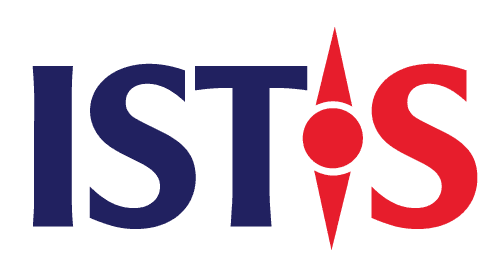In recent years, Vietnam has made notable strides in fostering a national innovation ecosystem. Alongside infrastructure investments and policy reforms, one of the government’s most visible tools has been public funding — including startup grants, research programs, and innovation competitions. While these financial mechanisms are often discussed in terms of direct support, their influence extends beyond capital. National funding also serves as a directional signal, shaping how startups, investors, and support organizations align their focus and resources.
Public capital, when deployed strategically, can strengthen priority sectors, encourage long-term investment, and foster collaboration between state, private, and academic institutions. This signaling function is particularly relevant in emerging ecosystems, where private capital may remain cautious or unevenly distributed. In such contexts, national funding can act as a guidepost — highlighting which challenges are considered nationally significant, which technologies are encouraged, and where entrepreneurial effort is most likely to be supported.
Vietnam’s approach to national innovation funding reflects this dual role. Whether in the form of startup support center-backed programs, provincial-level startup contests, or thematic challenges led by ministries, each funding initiative contributes to a broader narrative about national priorities. These signals help coordinate action: startups gain early validation, support organizations tailor programs accordingly, and investors observe emerging themes of interest.
To maintain this positive momentum, it is essential to continue viewing national funding not only as financial assistance, but as a policy instrument that shapes the direction and character of the innovation ecosystem. When designed with intention, these signals build coherence, attract cross-sector participation, and lay the foundation for sustainable growth across sectors.
Current Priorities Reflected in Vietnam’s National Funding Landscape
Vietnam’s national funding programs for innovation have steadily expanded over the past decade, guided by the government’s broader socio-economic development objectives. These funding streams not only support early-stage innovation but also serve to reinforce strategic themes that align with the country’s growth model, industrial policy, and international commitments.
A review of recent national programs indicates a clear orientation toward technology-driven, future-ready sectors. Priority has been given to areas such as digital transformation, green and sustainable development, smart agriculture, and health technology. Initiatives such as the Ministry of Science and Technology’s startup grant programs and the NIC sector-focused accelerators consistently emphasize solutions that contribute to both economic resilience and technological self-reliance.
For example, Vietnam’s commitments to carbon neutrality and environmental protection have been matched by increased support for clean energy, sustainable logistics, and circular economy initiatives. Similarly, as the country accelerates digital transformation across industries, funding has increasingly targeted artificial intelligence, fintech, and Industry 4.0 applications.
These patterns demonstrate a deliberate effort to align public funding with long-term national interests. By offering capital and visibility to these sectors, national funding not only supports their development but also encourages private-sector investment and ecosystem participation. In many cases, this alignment acts as a catalyst — enabling startups and research institutions to pursue ambitious projects with greater confidence in policy continuity and support.
Importantly, the consistency of these funding signals reinforces credibility. When public initiatives are designed with clarity and coherence, they become more than one-time programs; they form part of a strategic framework for guiding innovation across Vietnam’s economic landscape.
As national priorities evolve, funding programs will continue to play a central role in expressing those priorities and mobilizing the ecosystem accordingly.
Enabling Access — How Startups Can Engage with National Funding Mechanisms
While national funding initiatives offer meaningful opportunities for startups, accessing these resources often requires strategic preparation and institutional awareness. Many early-stage founders are product-focused and operate with limited experience in working with government programs. Bridging this gap is essential to ensure that public capital reaches the diverse range of innovators it is intended to support.
The first step for startups is to understand the landscape of available programs. Vietnam offers a variety of national and provincial-level funding mechanisms — including grants from the MOST, startup acceleration programs under the NIC, and sector-specific contests led by different ministries or local DOSTs. Each channel has distinct eligibility criteria, timelines, and selection procedures. Navigating them requires time, but also familiarity with the public innovation ecosystem.
A second consideration is the alignment between the startup’s value proposition and national development goals. Funding bodies are more likely to support initiatives that address well-identified public challenges — such as sustainable agriculture, digital transformation for SMEs, or environmental resilience. Startups that can position their solutions in this broader context, while maintaining business viability, often stand out during evaluation.
In addition, documentation and reporting requirements should be taken seriously from the outset. National funding programs emphasize accountability and traceability, and startups should be prepared to communicate their milestones, budget usage, and outcomes clearly.
Support organizations — such as incubators, universities, and innovation hubs — also play a critical role in connecting startups to public opportunities. Founders who actively participate in these ecosystems often benefit from clearer guidance, faster feedback, and better positioning.
Ultimately, startups that approach national funding not just as financial support, but as a strategic engagement with national priorities, are better equipped to build long-term relationships with public stakeholders.
Designing Effective National Funding — Toward Practical, Strategic, and Scalable Support
As Vietnam continues to position itself as an innovation-driven economy, the design of national funding programs plays a key role in shaping startup outcomes. Well-structured initiatives do more than provide capital — they offer visibility, build trust, and accelerate alignment between innovation and long-term development goals. To fully realize this potential, national funding mechanisms should be practical in delivery, strategic in focus, and scalable in impact.
1. Clarity and Simplicity
Application procedures should be streamlined and transparent. Clear guidelines on eligibility, timelines, and evaluation criteria help startups plan realistically and reduce administrative friction. Digital portals and unified communication channels can further support accessibility, especially for early-stage teams.
2. Thematic and Sectoral Relevance
Funding programs are most effective when built around well-defined themes that reflect national needs — such as climate adaptation, digital inclusion, or productivity in key value chains. These themes should be communicated early and consistently, enabling startups and support organizations to align their proposals with purpose.
3. Milestone-Based Disbursement
To ensure both accountability and flexibility, funding disbursement can follow milestone-based models. This approach allows startups to demonstrate progress, while providing public agencies with visibility into how funds are used. It also encourages outcome-oriented thinking, a key trait of successful entrepreneurs.
4. Support Beyond Capital
Financial grants are only one part of what startups need. Complementary services — such as mentoring, public procurement opportunities, regulatory navigation, or access to research infrastructure — can increase the effectiveness of the funding itself. When these elements are integrated, startups are better equipped to grow sustainably.
By embedding these principles, national funding programs can become more responsive, equitable, and outcome-driven, ultimately accelerating Vietnam’s broader innovation agenda.
Evolving National Funding — Practical Recommendations for the Next Stage
Vietnam’s national funding programs for innovation have already laid important groundwork. However, as the startup ecosystem matures and diversifies, these mechanisms must continue to evolve to meet the changing needs of both early-stage founders and long-term development objectives. Below are several practical areas of improvement that can help ensure public funding remains effective, inclusive, and catalytic.
1. Create Rolling or Multi-Cycle Calls for Proposals
Many existing programs operate on fixed deadlines, which may not align with the natural timing of startup development. Introducing rolling or multiple annual calls — especially for early-stage grants — can increase access and reduce bottlenecks.
2. Establish a National Funding Navigator Platform
Startups often struggle to find the right program or understand application steps. A centralized, bilingual online platform that maps national and provincial opportunities, with built-in filters and FAQs, could significantly improve transparency and reduce friction.
3. Promote Co-Funding and Matching Models
To strengthen public-private collaboration, national programs could invite co-investment from VC firms, corporates, or banks. This approach ensures alignment with commercial viability while preserving the public interest in priority sectors.
4. Engage Regional Innovation Hubs as Delivery Partners
Local universities, incubators, and business support centers can serve as implementation partners — helping identify candidates, monitor progress, and offer follow-up support. This expands the program’s reach without increasing administrative complexity.
5. Introduce Feedback Loops and Program Iteration
Finally, startups and ecosystem stakeholders should be regularly consulted. Insights from both successful and unsuccessful applicants can inform more adaptive program design and help build a culture of trust and continuous improvement.
Through these adjustments, national funding can grow from a standalone instrument into a core part of Vietnam’s innovation infrastructure — flexible, transparent, and aligned with the country’s dynamic entrepreneurial landscape.








